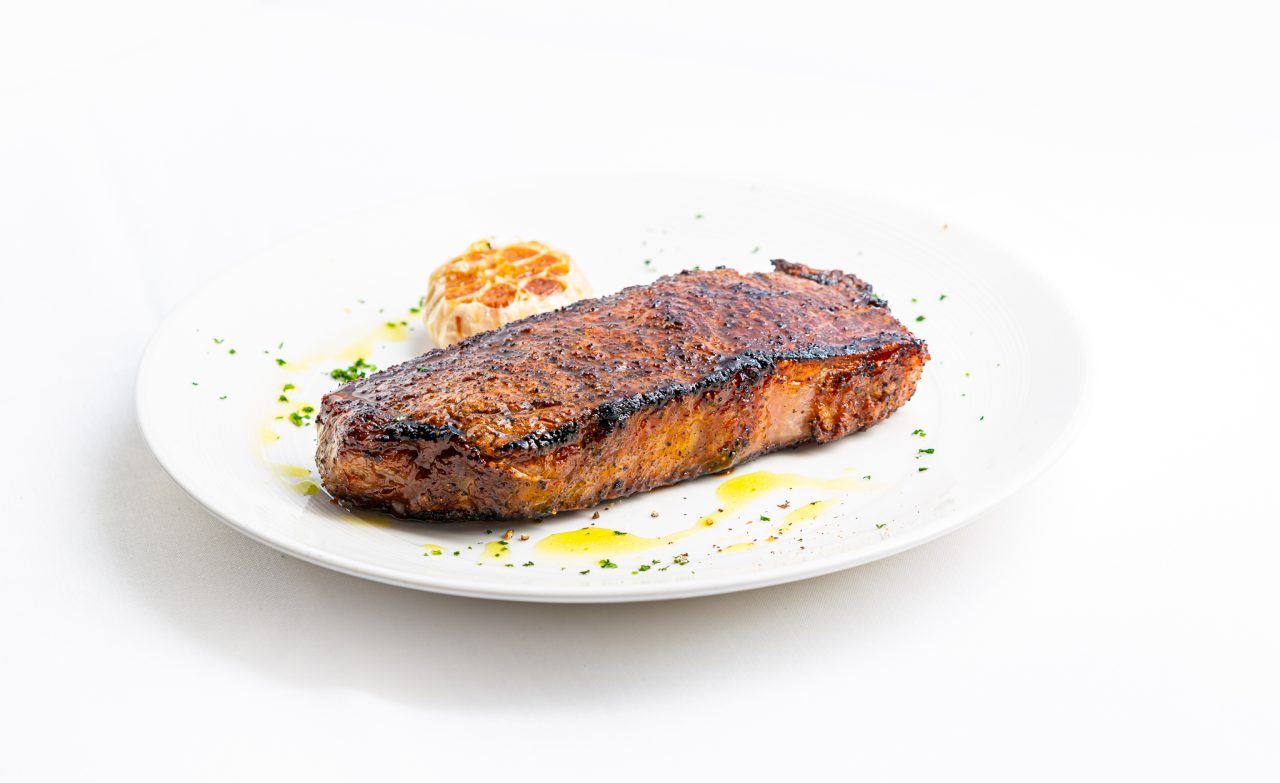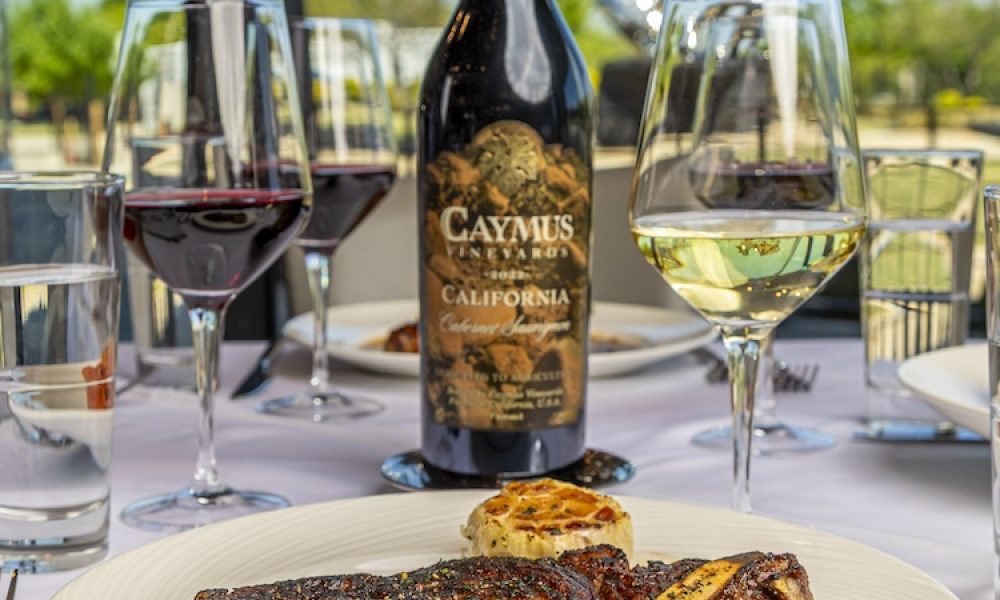The ribeye is a favorite among steak lovers because of its rich flavor, tenderness, and juicy texture. The marbling, or fat throughout the meat, makes each bite melt in your mouth. But to get the best flavor and presentation, cutting it properly is just as important as cooking and seasoning.
Cutting ribeye steak properly is crucial to ensuring that it is tender and flavorsome. Hence, this guide takes you through Rosebud Steakhouse’s techniques which make it possible to have a cleanly cut ribeye steak just like in a steakhouse.
Understanding Ribeye Steak Cuts
The ribeye steak is cut from the rotational muscle of a cow and is considered one of the most tender and flavorful types of steaks. It contains fat veins that dissolve during cooking making it taste luxurious and buttery. A ribeye is truly a treat for flesh-eater lovers; it is believed to be one of the best quality cuts obtainable in the market.
Anatomy of a Ribeye:
Fat Cap: This is a layer of fat on the outer edge of the ribeye. When cooked, it bastes the meat, adding moisture and flavor.
Ribeye Cap (Spinalis Dorsi): A highly marbled, tender, and flavorful part of the ribeye, often referred to as the best part of the steak.
Eye of the Ribeye (Longissimus Dorsi): The center of the ribeye, it’s leaner than the ribeye cap but still tender and packed with flavor.
When slicing a ribeye steak, it is important to understand its various components. Every part of the ribeye possesses a different texture and taste. Therefore, slicing in the correct manner ensures that all the bites contain a blend of fat with meat for better enjoyment during eating. At Rosebud Steakhouse, we make sure that our ribeye are well sliced so as they appear good and have soft flavors.
Tools You Need to Cut Ribeye Steak Perfectly
Before you even begin the real cutting process, it’s important to gather the necessary tools. Using the appropriate equipment enables accuracy, a vital aspect in tenderizing and flavoring a ribeye steak. At Rosebud Steakhouse we depend on fine tools to cut meat with perfection, and you can do it from your kitchen too.
Essential Tools:
Sharp Knife (Chef’s Knife or Butcher Knife): A sharp knife is the most critical tool for cutting ribeye steak. It allows for clean cuts without tearing the meat. Choose a chef’s knife for general use or a butcher knife for more precision and control.
Cutting Board: Opt for a sturdy wooden or plastic cutting board that won’t slip as you slice. The board should be large enough to accommodate the size of the ribeye steak and any juices that may run off.
Meat Thermometer: Ensuring the steak is at the right internal temperature before cutting is crucial for flavor and safety. A meat thermometer helps you verify that the steak has rested to the proper doneness.
Tongs or Meat Fork: Tongs or a meat fork are useful for handling the steak without puncturing or damaging the meat while cutting.
Using these tools will help you cut your ribeye just like we do at Rosebud Steakhouse, making sure it’s perfectly sliced every time.
Step-by-Step Guide: How to Cut Ribeye Steak
It requires both skill and accuracy in order to slice a ribeye steak properly. If you want to have the same level of tenderness, flavor and presentation as what they serve at Rosebud Steakhouse, follow these instructions.
Step 1: Let the Meat Rest After Cooking
Let your ribeye rest for about 5-10 minutes before slicing it. This resting time allows juices to flow back into the flesh and keep it moist and juicy. If you slice the steak too soon, all those delicious juices will run out of it and will create a dry steak.
Step 2: Find the Grain of the Meat
The grain refers to the direction of the muscle fibers in the steak. To ensure a tender cut, you’ll want to slice against the grain, which shortens the muscle fibers and makes each bite more tender. Look closely at the ribeye and locate the lines of muscle running through the steak.
Step 3: Slice Against the Grain for Tender Cuts
After finding the grain, cut across it. Your knife should be sharpened and held in a way that makes long sweeping movements possible while committing your focus into it so as to achieve an even and thin cut of meat. Thinner cuts will make it tender. If you were to cut along the grain, it would lead to firmer pieces.
Step 4: Cut into Manageable Sizes for Serving
After cutting against the grain, portion your steak into manageable sizes for serving. This step is particularly important if you’re preparing the steak for multiple diners. Slice the ribeye into pieces about 1/4 to 1/2 inch thick, depending on personal preference.
We follow these precise methods to ensure that every steak we serve is tender and perfectly prepared. By following these steps, you can get amazing results in your own kitchen, making sure every slice of ribeye is juicy and delicious.
Why Cutting Against the Grain Matters
Cutting against the grain is probably one of the most essential steps that you should take in ensuring your ribeye steak is never only tender, but also a delight to enjoy. The grain refers to the orientation of muscle fibers in meat. If not sliced correctly, they become long, hard and tough to chew..
The Science Behind It:
Consuming meat in a tender way requires slicing against its grain, thereby making it shorter. A tender and luscious steak is made better by small-sized pieces of meat that are easily chewable because they have been cut across the grain. The grain slices however result into bigger and tougher bits which will require more effort to chew..
Expert Tips from Rosebud Steakhouse:
Take Your Time: Don’t rush the process. Allow the meat to rest and then carefully examine the grain before making your first cut.
Angle Your Knife: Slightly angle the knife as you cut to make thin, even slices. This technique ensures that you’re cutting through as much of the grain as possible.
Watch for Changes in the Grain: The direction of the grain can change, especially in cuts like ribeye. Be sure to adjust your slicing direction accordingly.
At Rosebud Steakhouse, cutting against the grain is standard practice to ensure that every steak is as tender as possible. Whether you’re dining with us or preparing a steak at home, following this method guarantees a more enjoyable experience.
Common Mistakes to Avoid When Cutting Ribeye Steak
Even with the best intentions, mistakes can happen when cutting ribeye steak. However, avoiding these errors can make all the difference in achieving a perfectly sliced steak.
Mistake 1: Cutting With the Grain
As discussed, cutting with the grain leaves long muscle fibers intact, resulting in a tough, chewy texture. This mistake is common, especially for those unfamiliar with how to identify the grain.
Solution: Always look for the direction of the muscle fibers and ensure you cut across them. Take a few seconds to study the meat before slicing.
Mistake 2: Using a Dull Knife
A dull knife can tear the meat rather than slicing it cleanly, making it harder to cut against the grain and leading to uneven, rough cuts.
Solution: Keep your knife sharp. Regularly sharpen your knife or use a honing rod before each use. A sharp knife not only ensures clean cuts but also makes the process easier and safer.
Mistake 3: Cutting the Steak Too Soon After Cooking
Cutting into a ribeye steak immediately after cooking causes the juices to flow out, leaving you with a drier steak. It’s tempting to slice into that perfectly cooked steak right away, but patience is key.
Solution: Let the steak rest for 5-10 minutes after cooking. This resting period allows the juices to redistribute throughout the steak, keeping it moist and flavorful when you cut into it.
Mistake 4: Cutting Unevenly
Inconsistent slicing can result in pieces that cook or taste unevenly. Thin pieces may be tender, while thicker ones could be tough.
Solution: Use steady, even strokes to create uniform slices. If needed, you can measure by eye or use a guide to maintain consistency.
Professional Tip from Rosebud Steakhouse:
Practice and Patience: Like any skill, cutting ribeye steak perfectly takes practice. At Rosebud Steakhouse, our chefs have mastered the art of cutting steak through years of experience. Take your time, be patient, and remember that each cut will improve as you gain more familiarity with the process. With persistence, you can achieve steakhouse-level results in your own kitchen.
By avoiding these mistakes and following our tips, you’ll make your ribeye steak better and ensure it’s delicious and tender every time.
Difference: Quality Ribeye Steak in Chicago
At Rosebud Steakhouse, we pride ourselves on serving some of the finest ribeye steaks in Chicago. The difference starts with our dedication to sourcing only the best beef. We partner with Linz Heritage Angus Beef, a local, Midwest provider known for producing premium, high-quality cuts. This beef is carefully selected and aged to perfection, ensuring each steak is rich in flavor and has the ideal texture.
Our chefs meticulously prepare each ribeye, applying time-honored techniques to bring out the best in every steak. From sourcing the finest beef to applying expert cutting methods, every step is taken with the utmost care. Cutting the steak properly is the final step that makes every bite tender and flavorful.
Our focus on quality and tradition means you can really taste the difference in every bite, making us the best steakhouse in Chicago.
Conclusion
Cutting ribeye steak the right way is crucial for great flavor, tenderness, and presentation. Whether cooking at home or dining at Rosebud Steakhouse, knowing how to slice against the grain and use the right tools makes a big difference. We pride ourselves on perfecting each steak with skill and care. When you’re in Chicago, come visit us to taste the difference that expert preparation and cutting techniques make. With our commitment to quality, you’ll enjoy a truly exceptional ribeye steak.







